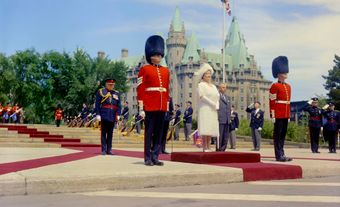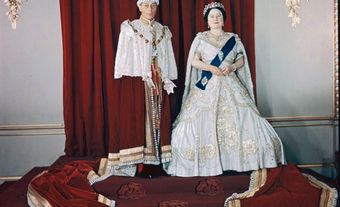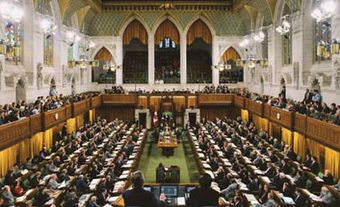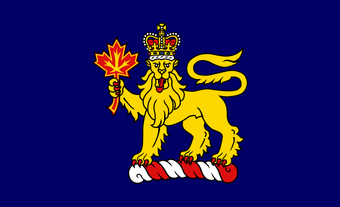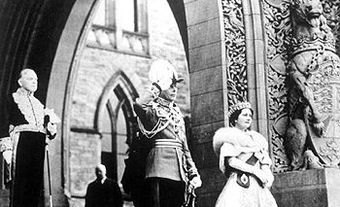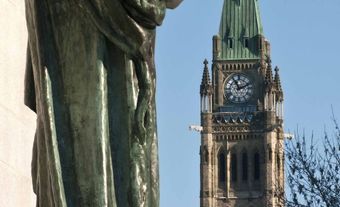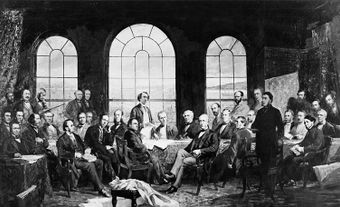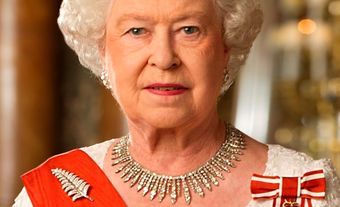Constitutional monarchy is Canada’s system of government. An absolute monarchy is one where the monarch has unchecked power. A constitutional monarch, in contrast, is limited by the laws of the Constitution. Constitutional monarchs do not directly rule. Instead, they carry out constitutional, ceremonial and representational duties. Canada’s monarch, King Charles III, is the head of state. The prime minister is the head of government. The monarch is represented by the governor general at the federal level and by lieutenant-governors in the provinces.

Constitutional Monarchy and the Constitution
Canada’s constitutional monarchy has roots in both the French and British monarchies. At Confederation, political leaders decided to remain a constitutional monarchy. According to the Constitution Act, 1867, “The Executive Government and Authority of and over Canada is hereby declared to continue and be vested in the Queen.” This gave Canada a system of government modelled on that of the United Kingdom. However, the British government continued to control Canada’s foreign policy. Over the years, Canada gained more control over its relationship with other countries. In 1982, Canada’s Parliament gained full control of its Constitution in what was known as patriation.
Under the Constitution, the Crown is the source of nonpartisan sovereign authority in Canada. (See also Sovereign; Sovereignty.) In other words, the Crown has the power to govern, but entrusts this power to the elected government, which holds it on a temporary basis. As head of state, the monarch is above politics, unlike the head of government, the prime minister.
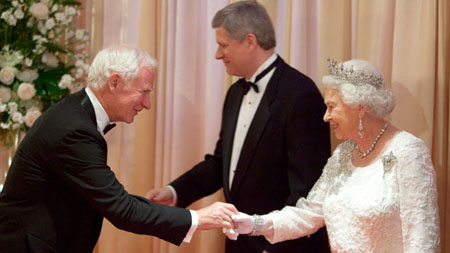
How the Constitutional Monarchy Works
Under Canada’s system of responsible government, the Crown is a vital part of the legislative, executive and judicial powers that govern the country. The Crown is the source of these powers, but they are exercised by the federal and provincial governments. In theory, the Crown and its representatives (governors general, lieutenant governors) can reject the advice, decisions and actions of parliament, ministers or judges. However, this rarely happens. In general, the Crown is bound to follow the government’s advice, which in turn represents the will of the people. For example, Parliament and provincial assemblies vote on and pass bills. Before they become law, they must be approved by the Crown. In theory, the Crown could withhold its assent, but this has not happened since 1945.
The monarch and vice-regal representatives in Canada, known as the governor general and lieutenant governors, have prerogative powers. These can be made in theory without the approval of another branch of government. However, they are only used in emergencies. One of these powers is to ensure that there is always a first minister; that is, a prime minister (federal government) or premier (provincial government). Following a general election, the monarch (represented by the governor general) invites the leader of the party that won the most support to form a government. If the current prime minister receives the most support, he or she continues to govern as before and confirms a new cabinet.
The Monarch
Canada’s Head of State is His Majesty King Charles III. The King is also the head of state in the United Kingdom and 14 other Commonwealth countries. According to the terms of the Act of Settlement of 1701, King Charles III will be succeeded by his eldest child, Prince William, the Prince of Wales.
In 2013, the Act of Settlement was reformed to end the system of male primogeniture. Prior to this, the eldest male child inherited the throne. Therefore, a younger son could displace an older daughter. The 2013 reform — which came into effect across the Commonwealth in 2015 — ended this system and made the eldest child, regardless of gender, the heir to the throne.
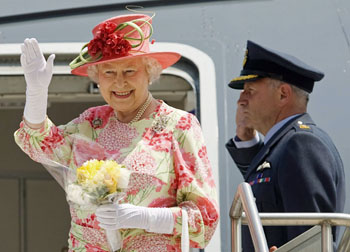
The Governor General and Lieutenant Governors
In Canada, the monarch is represented by the governor general. Inuk leader Mary Simon was formally installed as Canada’s 30th Governor General on 26 July 2021. She is the first Indigenous person to hold Canada’s vice-regal position.
In Canada’s 10 provinces, the Crown is represented by a lieutenant-governor. Territorial commissioners represent the federal government in the territories. They perform similar duties to those of lieutenant-governors.
See also Monarchism; Federalism in Canada; Governors General of Canada since Confederation; Royal Family Collection; Royal Family Timeline; Royal Tours of Canada; Constitutional Law; Constitutional History of Canada.

 Share on Facebook
Share on Facebook Share on X
Share on X Share by Email
Share by Email Share on Google Classroom
Share on Google Classroom
